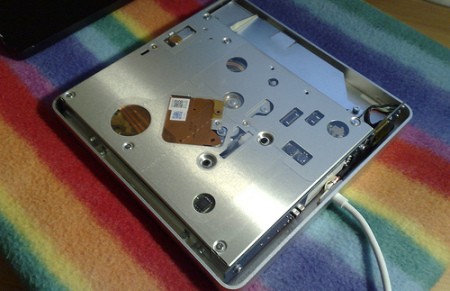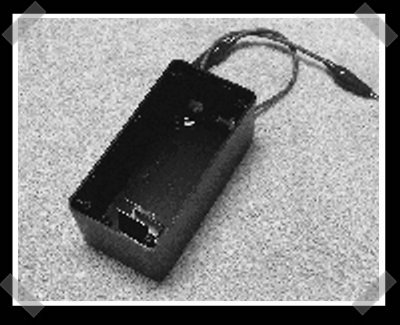
Nokia recently announced its plans to purchase Symbian and formed the Symbian Foundation with the intention opening the software platform over the next two years. Symbian is already present on 60% of all cellphones in the world. With such a massive install base, open source Symbian has a much better chance of taking off than platforms like Android, which are starting on the ground floor.
Day: June 24, 2008
Make A Universal Macbook Air Superdrive

For $99, Apple will happily sell you a slick USB superdrive (aka DVD burner) that only works with the MacBook Air. [tnkgrl] swapped out the USB-IDE interface with a generic $9 unit to make it work with everything else. The generic board required a few mods: relocating the crystal oscillator along with the amputation of its daughter-board that carried an external power connector, usb connector and some caps.
Tesla Coil Tuner

Here’s one more use for the insanely handy LM555 chips. [Terry] put together a Tesla coil tuner around one. The 555 is used to generate a range of frequencies while a simple double LED arrangement indicates the presence of an output spike from a coil due to the resonance.
Always On USB Charge Port

This simple and clever guide to installing an always on USB port comes from the Team Hack-a-Day forums (originally created for the team’s Folding@home efforts). [Cerberus] added a USB port to his computer case that always has power, even when the computer is off. The power comes from the +5VDC standby line in the motherboard connector. You can use this new port to charge any USB based device.
Laser Surveillance Defeater

Imagine our chagrin when we first laid eyes on this “laser surveillance defeater.” It’s supposedly built to the security requirements of federal agencies. We don’t believe most government issue devices have exposed circuit boards or 9V batteries dangling from them. Laser surveillance works by bouncing the beam off of a room’s window. People speaking in the room cause the window to vibrate, which modulates the reflected laser beam. This device looks like it’s just a piezo buzzer meant to vibrate in vocal ranges. A quick search didn’t turn up any DIY projects, but it looks simple enough. Shomer-Tec would love you to purchase one for every window at $69 each. A small price to pay when you’re taking on people willing to spend $20.
[via Gizmodo]
Pwnie Awards 2008, Nominations Open

Nominations for the 2008 Pwnie Awards have opened. The annual event, in its second year, is accepting nominations in nine categories ranging from Mass 0wnage to Best Song. The awards will be presented at the Black Hat in Las Vegas in August. Linux.com covered last year’s awards ceremony.
[photo: GNUCITIZEN]
[via trailofbits]
Logicport Overview

As promised earlier, the Near Future Laboratory has published an overview of the Logicport Logic Analyzer. They’re using the Playstation 2 analysis as an example. The Logicport uses “interpreters” to define protocols. It has I2C/TWI, SPI, RS232, and CAN 2.0A/2.0B, but you can build your own interpreter based on these. You can specify bit order and the format you want the data in. Slave interpreters can be used for specific tasks: with the PS2 they were used to just show the fifth byte, which is the actual button press.
“Triggers” are used to signal specific activity. On the PS2, one was attached to the falling signal on the slave select line. This event means the master is about to start sending data.
The final area worth exploring is “measurements”. These can be frequency or arbitrary time intervals between events. The Logicport has multiple ground connections to eliminate noise from the signal and you’ll have to play with sample rate and logic level to get things running smooth. It’s nice to see how-tos written from the perspective of someone just getting started with the tool.











